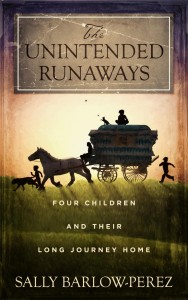“Reading the Middle Grade Mind”
Have you ever tried to steer one of your favorite kids toward one of your favorite books? You’re in eager enthusiasm mode. “Hey, you are going to LOVE this book!”
Then the kid rears back, looks like you asked him to drink a glass of hot chalk, gives you that look, and says, “Uh, thanks, but I don’t think so.”
Just like adults, kids pick books for their own reasons. And timing is everything. One week a reader might feel like something light that reflects familiar problems like, The Mother Daughter Book Club series; the next week he or she might relish the challenges of Wonder or maybe a visit to a whole to universe in The Lightning Thief or something as wacky as one of the Wimpy Kid books. It all depends on mood, just like it does with you and me. Or stress level. Or time availability. I’ve seen a 9-year old read and enjoy a Babysitter Club book – standard 3rd grade level reading—during a school week, and Wonderstruck— 5thgrade level reading–on her vacation. Makes sense. You and I don’t read Dostoevsky when we barely have time for lunch. Middle grade readers thrive on a huge variety of choice. Which is lucky, since as authors, we are just as eclectic as our young readers!
That said, I am sure there are those of us who try to shake loose a few practical thoughts before we set pen to paper to write our deathless prose. No doubt, in addition to prayer, you’ve tried to psyche out just where that sweet spot in middle grade literature is. Sure, there are trends and the Goodreads lists and I’m sure there are some left-brain writers out there who can successfully write to the formula. But since I’ve always favored on-the-spot research, I thought I’d go directly to the source: my sixth grade consultants: Sarah, Haley, Carolyn, Mia and Emily. “What have you been reading lately?” I asked them. These are just a few samples of the many titles they sent me:
- Escape from Mr. Lemoncello’s Library by Chris Grabenstein
- I Will Always Write Back: How One Letter Changed Two Lives by Martin Ganda
- The Agony and the Ecstasy by Irving Stone.
- The Port Chicago 50 by Steve Sheinkin
- School of Charm by Lisa Ann Scott
- Black Beauty by Anna Sewall
- Little Women by Louisa Mae Alcott
- Number the Stars by Lois Lowry
- Hope is a Ferris Wheel by Robin Herrera
- The Hunger Games by Suzanne Collins
- Wonder by R.J. Palacio
- The Egypt Game by Zilpha Keatley Snyder
Sure, it’s a girls list; not much blood and guts there but look at the variety. From dystopia to Victoriana to the serious issues of an adolescent with a disability to pure escapism. Irving Stone, no less! Remarkable that reading tastes could vary so widely among such friends from the same school in the same grade with such similar backgrounds. My point being, that predicting subject matter that will appeal to every middle grader is a losing proposition.
Picture this—and if you’ve taken your children or your students to the library, you’ve seen it many times. A middle grader sitting on the floor between the stacks taking out book after book off the shelf, looking at it very briefly, and then returning it to that empty slot among the other books. Those poor, forlorn, rejected books. Someone put his or her heart and soul into writing that book! What was wrong with it! Well, it just didn’t suit, that’s all. For reasons we, as onlookers (or the unfortunate author of said rejected volume) will never know. My conclusion: short of writing a tome on the love life of ants, I might as well forget trying to guess what will suit the middle grade reader and suit myself instead.
At the same time—trying with some difficulty to recall my past life as a lit. major—I tryed to find the commonalities in the lists of books my sixth graders sent me. It wasn’t in the eras, the settings or the subject matter. They varied from Hogwarts, to Ghana, to the rural South, to a dystopian future, to small town USA, to ancient Rome. Lots of variety there and choice in those areas can be a matter of cover art, flap blurb or momentary whim. But in the protagonist (Lit. 101 !) I do think young people make a conscious choice to read a book featuring one of two different kinds of protagonists:
- A character with whom they can completely identify; someone who shares their sensibilities, their strengths, their weaknesses, and their secret feelings; someone who permits them to sigh in relief, saying, “I am not alone; Someone else feels or behaves that way too.”
Or - A character with whom they can partially identify, but who is perceived as an individual to emulate; someone with qualities to admire, or aspire to, even if those qualities are as basic as patience, or self-assurance, or courage rather than the ability to fly or fight dragons.
It might be simplistic to say that the former is featured in reading that requires a little less concentration than the latter. I’m sure there are examples either way. But the best authors show us well rounded characters who evolve and change in both cases. What a privilege it is to read the work of the many wonderful authors of middle grade fiction who make their characters come alive for us. I see my young friends absorbing Palacio’s Auggie, Hodgson Burnett’s Sara Crewe, Pullman’s Lyra, Selznick’s Ben and Rose; Riordan’s Percy, and Lowry’s Jonas and I think, “These characters are becoming part of who my young friends are.” How could they not?
I too feel as though I too have been influenced by the thousands of fictional characters that have filled me up over the years. A good number have come from middle grade books. Many from young adult books. One memorable one was the picture book that inspired my own middle grade novel, The Unintended Runaways, with its lively painting of a gypsy wagon and the carefree little girl who lived in it.
The tale that formed around that picture was the story I wanted to tell. I fought it. I’d been in marketing and public relations and I knew historical fiction was emphatically NOT in vogue. Would anyone read it? Newsletters and conferences told me I would never sell it. “Write it anyway,” I told myself. I already had visions of the beautiful blue wagon and the big shire horse trotting down the lovely rural roads of mid-19th century England. market.
“Don’t be an idiot,” I argued back. “You’re a journalist. You wrote a history book. Get out there and write something that’ll sell. How about an academy for shapeshifters? A middle school mafia? An underground society ruled by 12-year olds? You can do it! Get with the program!”
“Yeah,” said my better self. “And it will suck, big time and you will hate every minute of it. This is 40,000 words we’re talking about.”
So I did it my way. I wrote my historical novel about 19th century young people. Unfashionable as my setting might be, I knew today’s middle graders would identify with the larger themes of justice, freedom, and family. And I hoped they would fall in love with my characters just as I did.
Thus The Unintended Runaways came into being. My sixth grade consultants – who were very generous early readers!—say they like it. (They kind of have to say that.) But the proof will be in the sales figures. Because as a general rule……
There’s just no reading the middle grade mind.
______________________________
Links:
Website: www.theunintendedrunaways.com
______________________________
Summary: For a girl who loved adventure, twelve-year old Lia Leonides had the perfect life. Every summer, she and her grandfather traveled the rural roads of England in their gypsy wagon, stopping at fairs and selling horse brasses along the way. It was exactly the life Lia wanted, until the day a mysterious letter arrived. Lia’s grandfather warned her not to get her hopes up, but lifelong dreams are hard to ignore. Lia’s father was alive and looking for her. But when her grandfather suddenly passes away, Lia is sent to work as a servant in an orphanage and is left with a choice that she never wanted to make: let the world decide her future for her, or run away and decide it for herself? Lia, with the help of her beloved pets and some unexpected friends, must take her gypsy wagon south on a harrowing journey before her father disappears forever. A persistent sheriff and the constant threat of misfortune won’t make the trip easy, but Lia and her friends don’t plan to let anything stop them from forging their own destinies.
______________________________
About the Author: Sally Barlow-Perez openly admits that books have taken over a good chunk of her life. She gobbles down two or three library books a week, ranging in genre from young adult, to middle grade, to fantasy, to mystery. She tries to balance her book obsession with writing, hiking, and hanging out with the young people who inspire her. But no matter how hard she tries, she always comes back to books. As a fiction writer, Sally’s focus is curiosity. “Curiosity is a great excuse for writing, as well as for reading,” she says. “Even when I finish a book, I still wonder what the characters are doing!” Sally makes her life in Palo Alto, California. She has two grown sons, whom she believes to be her greatest contribution to mankind. The Unintended Runaways is her first middle-grade novel. More information is available at www.theunintendedrunaways.
Thank you Sally for this insightful guest post!



